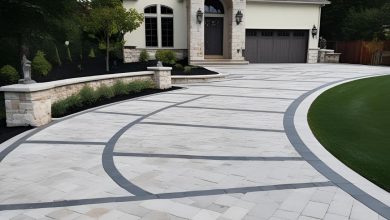The Importance of Surface Preparation Before Exterior Painting

Do you want to beautify your home’s exteriors and paint it in fresh, refreshing colors that make it stand out and be a visual treat for the eyes? When it comes to giving your home a new look, exterior painting can make a huge difference in your home’s outer appearance. Besides enhancing your home’s appearance, it also protects your home from the elements. However, one of the most crucial steps in the exterior painting process is often overlooked: surface preparation. Properly preparing the surface before applying paint is essential for achieving a long-lasting and beautiful finish. Here’s why surface preparation is so important.
Why Surface Preparation Matters
-
Adhesion of Paint
Paint needs a clean, smooth surface to adhere properly. If the surface is dirty, greasy, or covered in old paint that is peeling, the new paint will struggle to stick. This can lead to bubbling, flaking, or peeling of the paint after a short period, which defeats the purpose of the entire project. Taking the time to clean and prepare the surface ensures that the new paint will bond effectively, leading to a durable finish.
-
Preventing Mold and Mildew
Exterior surfaces are often exposed to moisture, which can lead to the growth of mold and mildew. If these issues are not addressed before painting, they can be trapped under the new layer of paint, causing discoloration and potential health hazards. Surface preparation includes checking for any signs of mold or mildew and treating them appropriately, ensuring a healthy environment for your home and family.
-
Addressing Imperfections
Over time, surfaces can develop cracks, holes, or rough patches. These imperfections can be quite noticeable once painted over. Surface preparation involves filling in any cracks or holes and sanding rough areas, resulting in a smooth and even surface. This attention to detail will enhance the overall appearance of your paint job and provide a professional finish.
-
Extending the Life of Your Paint Job
Investing time in surface preparation can extend the life of your exterior paint. When surfaces are properly prepped, paint is less likely to wear down due to the elements, such as sun, rain, and wind. A well-prepared surface can lead to a longer-lasting finish, saving you money on future repainting and maintenance.
Steps for Proper Surface Preparation
-
Cleaning the Surface
Start by washing the exterior walls using a pressure washer or a garden hose with a scrub brush. Remove dirt, dust, and any old paint that may be peeling. Allow the surface to dry completely before proceeding.
-
Inspecting for Damage
Check for any signs of damage, such as cracks or holes. Use a putty knife to scrape away any loose paint and apply a suitable filler to repair these areas. Once dry, sand these spots until smooth.
-
Sanding
Sanding the surface helps create a rough texture for better paint adhesion. Use sandpaper to smooth out any rough patches, and ensure to wear a mask to avoid inhaling dust.
-
Priming
Applying a primer can enhance the paint’s adhesion, especially if you are painting over a dark color or bare wood. Primers also help in blocking stains and ensuring a more uniform finish.
Conclusion
Surface preparation is a vital step that should never be skipped in the exterior painting process. Taking the time to properly prepare the surface will ensure better adhesion, prevent mold and mildew, smooth out imperfections, and extend the life of your paint job. Whether you’re a DIY enthusiast or hiring professionals, understanding the importance of surface preparation will lead to a beautiful and long-lasting exterior finish for your home.




